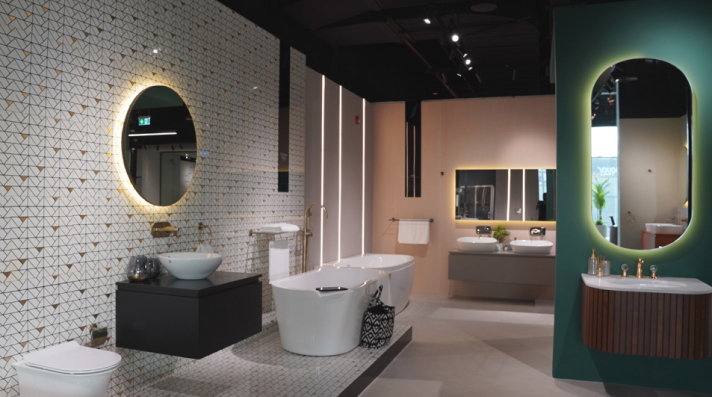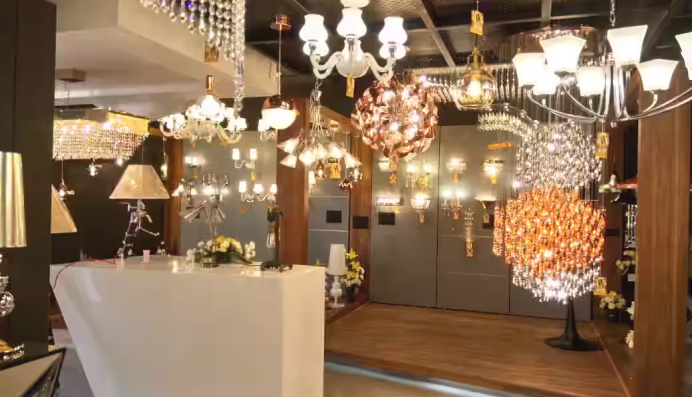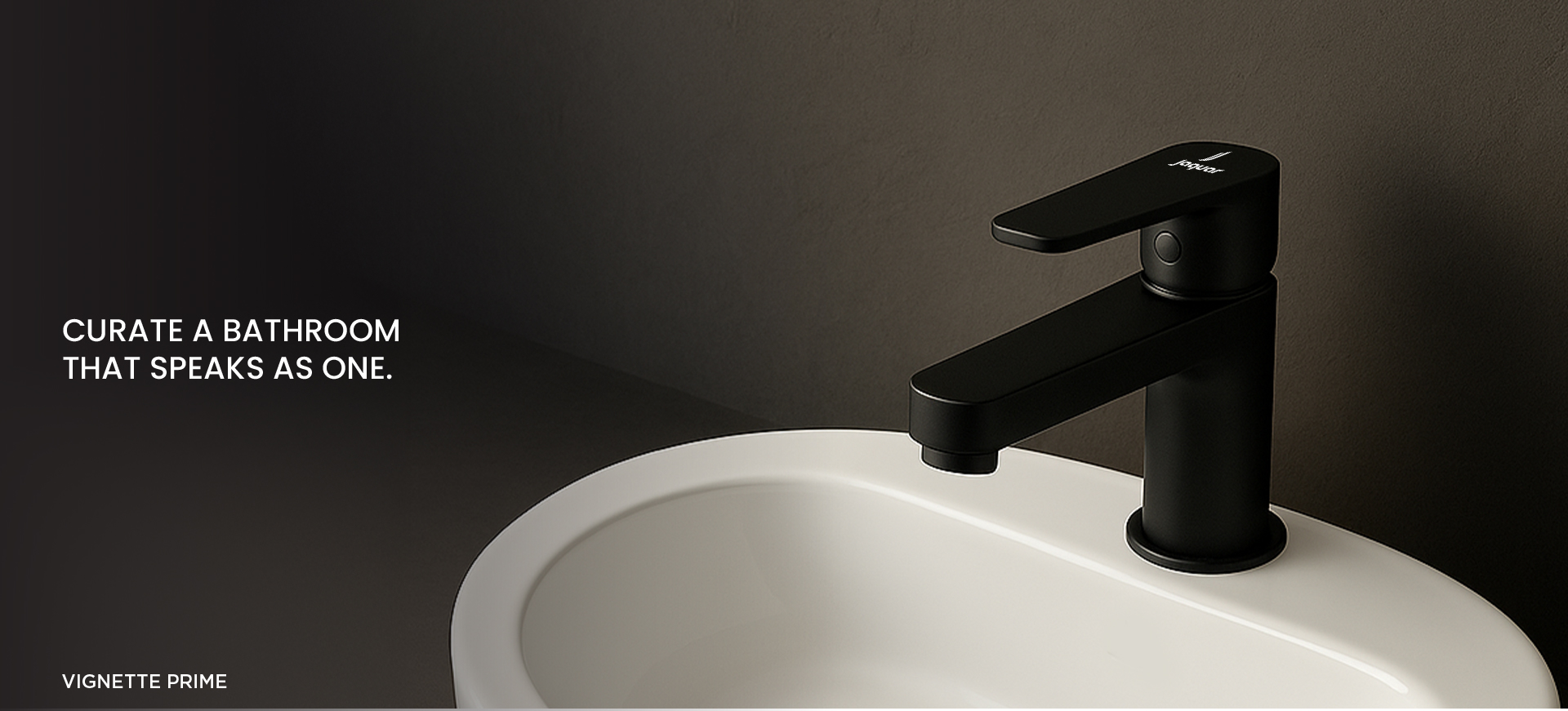The modern bathroom has evolved far beyond a purely functional space; it is now viewed as a private sanctuary, a space for wellness and retreat. To design this sanctuary, many homeowners are moving away from restrictive matched suites, instead embracing the freedom of mixing and matching sanitaryware. However, attempting to combine different pieces from various styles and brands without a plan risks creating a disjointed, "showroom mishmash."
The goal is to achieve a unique, layered look that feels cohesive and professionally designed. The key to this cohesion lies in finding and committing to a unifying element, be it colour, geometry, or finish, that ties every disparate piece together.
The Foundation: Establishing Your Unifying Element
Successful design relies on the strategic limitation of variables. If you choose to mix different shapes (geometry), you must maintain consistency in the metal finish. If you mix different finishes, the ceramic shapes should be nearly identical.
1. Consistent Finish (The Safest Route)
This is the fastest path to harmony. By ensuring all your visible metal elements share the same finish, you create instant visual unity. Commit to a single finish for all taps, showerheads, valves, towel racks, and toilet roll holders (e.g., all Brushed Nickel, all Polished Chrome, or all Matte Black). The eye reads this continuity as intentional design.
2. Consistent Geometry (The Designer's Trick)
Choose a dominant shape and repeat it across the ceramic and metal components. If your basin is a sharp, square vessel, choose a square-edged toilet seat and mixer faucets with a defined, angular spout. If your wash basin table top is a soft oval, choose rounded, cylindrical taps and accessories.
3. Consistent Colour/Tone (For Bold Design)
If you venture beyond standard white sanitaryware (e.g., a black WC or a grey basin), you must ensure the ceramic tone is perfectly matched across all pieces to prevent conflicting shades. For standard white, stick to high-quality, bright white ceramic across the board.
Strategic Mixing: The Core Elements (The 4 Ps)
To ensure success, treat each piece of sanitaryware as a specific element with a defined design role.
1. The Primary Piece: Water Closet (The Minimalist Anchor)
Water closets should be the least visually distracting element in the bathroom, prioritising functionality and space efficiency. To achieve this, choose a clean-lined model, such as a fully skirted design (which hides the plumbing channel) or a wall-hung unit, as either choice simplifies the floor plan and minimises visual clutter. Crucially, consistency in the white ceramic tone is vital here to ensure the fixture acts as a cohesive anchor rather than an unwanted focal point.
2. The Practical Piece: The Basin/Sink (The Style Statement)
The basin and its vanity offer the best opportunity to introduce character and style. Pair a clean-lined, minimalist WC with a hand-wash basin table top that provides contrast. For instance, contrast a round, sculptural counter-top basin with a sharp, rectangular WC, unified by a shared faucet finish (e.g., all Matte Black). Pair a heavily textured wood or slate vanity unit with a simple, pure white under-mount sink to avoid visual overload.
3. The Plumbing Piece: Faucets and Fixtures (The Jewellery)
Your faucets and fixtures are the vital small details, the jewellery of the bathroom, that instantly tie the room's different elements into a single, cohesive statement. Because they are so visible, this category is non-negotiable: all components must share the same finish (be it Matte Black, Chrome, or Brass) to unify the design.
You can leverage these fittings to balance the overall style; for instance, a simple, modern mixer faucet can temper an ornate, traditional basin, or a vintage-style bridge faucet can inject character into a plain, contemporary sink.
4. The Pairing Piece: Bathtub/Shower (The Supporting Role)
The bathtub should match the material and ceramic colour (usually white acrylic or porcelain) of the wall-mounted wash basin and WC, but can differ in shape to introduce a gentle contrast. A sleek, modern freestanding tub can provide a beautiful contrast to a vintage-style basin, provided they are both unified by the same bright chrome finish on the taps and floor-mounted filler.
Beyond Sanitaryware: Creating True Cohesion
Once the sanitaryware is chosen, the surrounding environment must act as the canvas to tie the mixed elements together.
- Hardware Consistency: This is often forgotten. Ensure vanity handles, cabinet knobs, and even the shower door frame match the faucet finish.
- Tiling & Wall Treatment: Use large-format, neutral tiling as a backdrop to let the hand-wash basin speak. Conversely, use a unique, textured tile to frame a specific piece (like a shower wall or a vanity niche), directing the eye to that focal point.
- Lighting and Accessories: Choose lighting fixtures and mirrors that echo the dominant geometry of the room. For example, a round mirror complements a curved basin, while a square vanity light supports angular features.
Conclusion: Final Check for Harmony
Successful mixing and matching of wall-mounted wash basin and other sanitaryware is an exercise in controlled contrast. You create interest through different shapes and styles but maintain peace and balance by committing to a single unifying factor, usually the metallic finish or the geometric theme.
At Jaquar, we simplify this entire process. We offer an extensive range of sanitaryware and complementary fixtures that are specifically designed for harmonious mixing, ensuring your unique design vision is achieved without compromising quality or visual unity. Explore our collections on the website today.
FAQs
The most important rule is to establish a Unifying Element. If you choose to mix shapes (a square basin with a round WC), you must ensure consistency in the metallic finish (e.g., all Chrome) or the ceramic colour (all Bright White) to prevent the room from looking visually chaotic.
Ideally, the WC should be the anchor (usually simple and clean-lined, like a skirted or wall-hung model) to minimise visual distraction. The Basin (or Vanity) is the primary piece where you can introduce a unique style, shape, or material to make a statement.
All visible metallic finishes must match. This includes the basin faucet, showerhead, valves, towel bar, and even the cabinet hardware. Sticking to one finish (e.g., Matte Black) is the easiest way to visually tie all the different ceramic shapes and brands together.
Yes, this is an excellent strategy for achieving a layered, bespoke look! The contrast creates visual interest. You can use a sleek, modern faucet to "temper" a very ornate, traditional basin, or use a vintage-style bridge faucet to add character to a simple, contemporary sink.
Yes, inconsistent white tones can be visually jarring. Because the pieces are installed close together, even subtle differences between a stark white WC and a cream-toned basin can make the design look mismatched. Always compare the ceramic colours of different brands closely before committing to ensure they are consistent.


